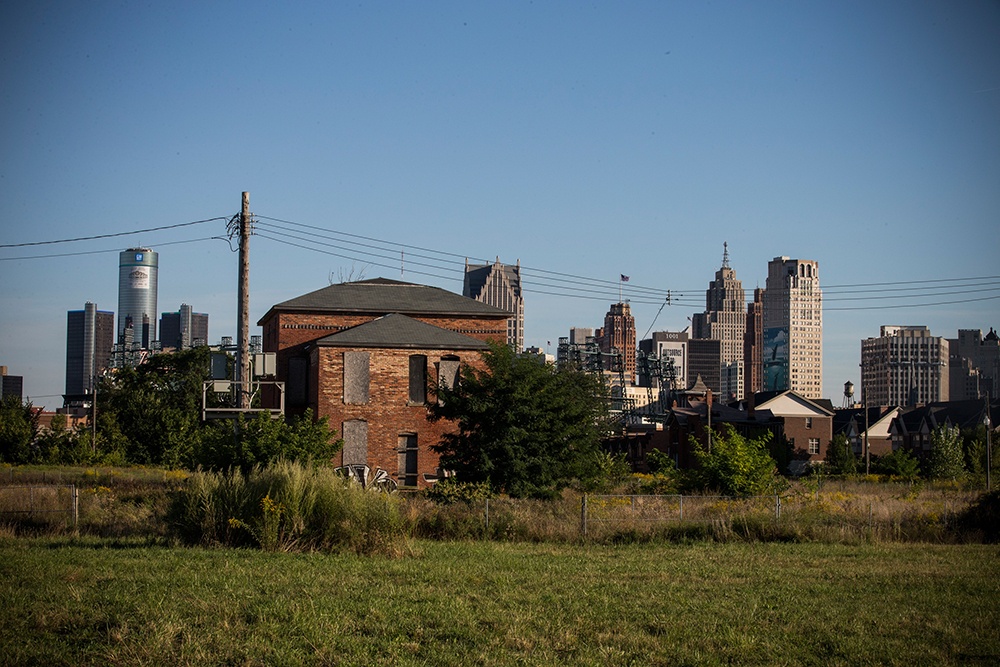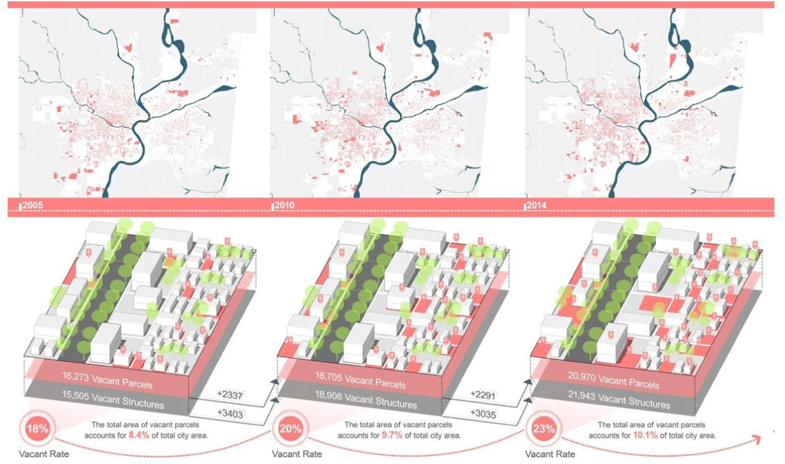Architecture Prof Develops Predictive Tool To Help Shrinking Rust Belt Cities Bounce Back
Highlights
- Globally, as of 2007, there were 370 large cities that had shrunk in population by at least 10% over the previous 50 years
- Urban planning professor Galen Newman developed a tool that predicts where areas of future decline will occur
- The project is the result of a collaboration between Newman the Texas A&M School of Public Health, the Texas A&M Bush School of Government & Public Service
Urban planners in shrinking Rust Belt cities grappling with a growing number of vacant lots, abandoned buildings and declining neighborhoods could get help from a new planning tool developed by Galen Newman, Texas A&M associate professor of urban planning, and a team of university researchers.
In a Journal of Geovisualization and Spatial Analysis article, Newman outlined the tool, a geographic information systems-based model that predicts where areas of future decline will occur and identifies parcels that have the highest potential for sustained redevelopment.
With this knowledge, municipal officials can harness this new approach to new create policies that encourage nonresidential development and additional land uses that best fulfill a respective community’s needs.
Typically, planners start with land inventories and assessments to identify opportunities to deal with vacant lots, said Newman, who also heads the Texas A&M Center for Housing and Urban Development. “This approach utilizes a prediction model at the neighborhood scale to assist in decision-making processes around vacant land use.”
The project is a result of a collaboration between Newman and Landscape Architecture and Urban Development researchers Donghwan Gu, Boah Kim, Ryun Jung Lee, and Yuxian Li; Jennifer A. Horney of the Texas A&M School of Public Health; and Domonic Bearfield of The Bush School of Government and Public Service.
The project, which won a national design award from the American Society of Landscape Architects, was funded by the TAMU Humanities and Creative Arts Program and the Council of Educators in Landscape Architecture and California Landscape Architecture.
An associate head of the Department of Landscape Architecture and Urban Planning, Newman studies the reuse of vacant properties in cities, land use science, spatial analytics, and community flood resilience.
His award-winning research, funded by many internal and external funding sources including the National Science Foundation and the National Institute of Health, appears in numerous, peer-reviewed publications including the Journal of the American Planning Association, Landscape Journal, Environment and Planning B, Landscape Research, and Cities.
Among his additional research-based projects since joining the Texas A&M faculty in 2011, Newman has investigated flooding and pollution in Houston’s Sims Bayou, a major municipal runoff drainage channel, recommended amenities for a proposed Ike Dike intended to protect the Galveston/Houston area from hurricane storm surges, and helped create a scorecard to help city planners assess whether a community’s hazard plans actually target areas most vulnerable to natural hazards such as floods or hurricanes.
This article by Sarah Wilson originally appeared in ArchOne.








